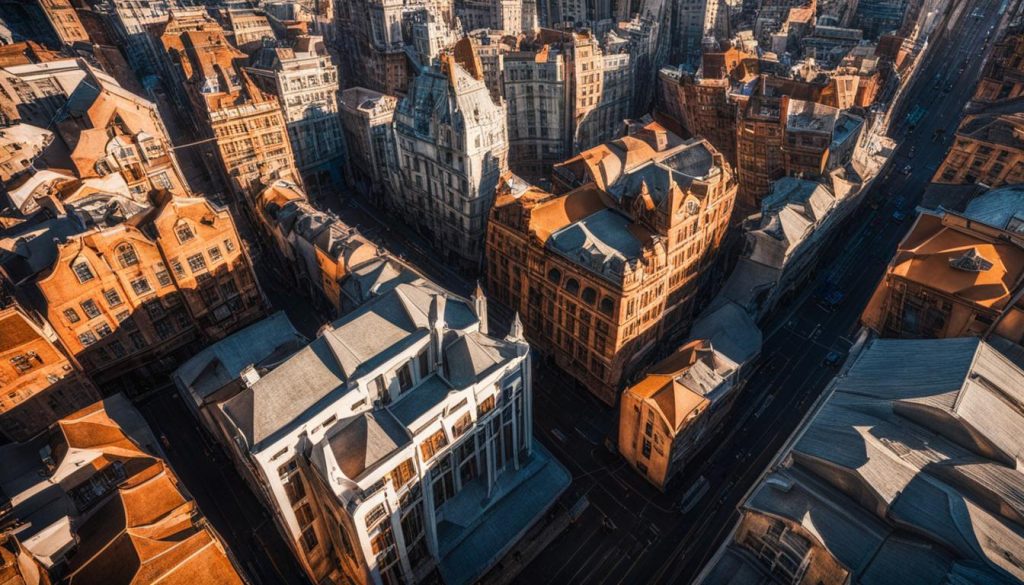Black and white photography is a timeless art that offers a unique perspective on the world around us. To capture stunning monochrome images, it’s essential to have a checklist of key considerations in mind. Whether you’re a seasoned pro or just starting, this checklist will help you create breathtaking black and white photographs that stand the test of time.
In this section, we’ll delve into the essential checklist every black and white photographer should keep in mind. From understanding the unique power and impact of black and white photography to mastering light and shadow and choosing the right subjects, we’ll explore the techniques and best practices that make for stunning, timeless imagery.
Key Takeaways:
- Having a checklist of essential considerations is key to creating stunning black and white photography.
- Understand the unique power and impact of black and white photography to evoke strong emotions and convey a sense of timelessness.
- Choose the right subjects that lend themselves well to monochromatic interpretation to reveal their true beauty without color.
- Mastering light and shadow is crucial to creating impactful images with strong contrasts and dramatic tonal range.
- Composition techniques are crucial in enhancing the visual appeal of black and white photographs and making them compelling.
Understanding the Power of Black and White Photography
Black and white photography has a unique and powerful ability to evoke strong emotions and create a sense of timelessness. While color photography captures a moment as it was seen, black and white photography captures the essence of the moment, revealing it in a different light. By removing the distraction of color, black and white images can reveal hidden elements and convey a deeper message.
Black and white photography has a rich history and is often associated with classic and timeless art. It can add a sense of drama, mystery, and nostalgia to an image, creating a powerful impact on the viewer. Many iconic photographs throughout history have been captured in black and white, emphasizing the contrast and dramatic tonal range that can be achieved.
Whether you’re capturing a landscape, portrait, or street scene, black and white photography presents a way to express yourself creatively and convey a sense of raw emotion. By harnessing the power of contrast and tone, you can create black and white images that leave a deep impression on the viewer.
“Black and white are the colors of photography. To me, they symbolize the alternatives of hope and despair to which mankind is forever subjected.” ― Robert Frank
Choosing the Right Subjects for Black and White Photography
Not all subjects are created equal when it comes to black and white photography. Some subjects are best captured in full color, while others lend themselves well to monochromatic interpretation. Here are some tips for choosing the right subjects for your black and white photography:
- Look for strong contrasts: Black and white photography relies heavily on contrasts between light and dark. Look for subjects that have clear lines and shapes, to create dramatic shadows and highlights.
- Focus on texture: Black and white photography can bring out the texture of your subject in a way that color photos can’t. Try to choose subjects that have interesting textures, like rough stone or smooth metal.
- Consider the mood: Different subjects can evoke different emotions when captured in black and white. For example, a dark and stormy sky or an abandoned building can create a sense of mystery and intrigue.
Remember, the key to great black and white photography is to reveal the true beauty of your subject without relying on color. Keep these tips in mind while selecting your subjects and watch your monochrome images come to life!
Mastering Light and Shadow
The key to creating impactful black and white photographs is mastering light and shadow. Properly understanding these elements can create images with dramatic tonal range. In black and white photography, there are no colors to differentiate one object from another; hence, the importance of light and shadow is magnified.
When taking black and white photos, pay attention to the light, and how it interacts with your subject. Position your subject in a way that creates strong contrasts between light and dark areas.
Shadows also add depth and dimension to your images. Play with shadows to create interesting and visually appealing compositions. Be open to shooting during different times of the day to understand how changing light conditions affect your photographs.
Keep in mind that harsh light can result in stark shadows that might overwhelm the image. Alternatively, soft light can diffuse shadows and create a more muted look.
“Light makes photography. Embrace light. Admire it. Love it. But above all, know light. Know it for all you are worth, and you will know the key to photography.” – George Eastman
Composition Techniques for Black and White Photography
Black and white photography offers a unique opportunity for photographers to emphasize composition. By eliminating colors, photographers can focus on other elements such as contrast, texture, and shape.
One of the essential composition techniques to keep in mind for black and white photography is the rule of thirds. This technique involves dividing the frame into thirds vertically and horizontally, creating nine equal squares. The subject should be placed where these lines intersect, creating a more visually pleasing and balanced composition.
Another composition technique that works well in black and white photography is symmetry. Symmetrical compositions can create a sense of balance and harmony in an image. When working with symmetrical subjects, such as buildings or landscapes, pay attention to the placement of the horizon and ensure that it is level.
Experimenting with leading lines can also be effective in black and white photography. Leading lines can lead the viewer’s eye through the image, creating a sense of depth and drama. Look for natural lines in the environment such as fences, roads, or the lines in the architecture that you can use to guide the viewer’s eye.
Remember that composition is subjective, and there are no set rules. Therefore, it’s essential to experiment with different composition techniques and see what works best for your personal style.

Post-Processing Tips for Black and White Photography
Black and white photography is an art form that requires a good understanding of tonal range and contrast. Post-processing is an essential part of creating stunning black and white images. Here are some useful techniques and tips to take your black and white photography to the next level.
Converting Color Photos to Black and White
One of the most common ways to create black and white images is by converting color photos. Use photo editing software like Adobe Photoshop or Lightroom to convert your color photos to black and white. Adjust the brightness, contrast, and tonal range to enhance the richness of your black and white photos.
Enhancing Tonal Range
Another key aspect of post-processing black and white photos is enhancing the tonal range. This can be done by adjusting the highlights, shadows, and mid-tones to achieve a more balanced exposure. Use the histogram tool in your photo editing software to identify areas that need adjustment.
Selective Editing
Selective editing can help bring out the best in your black and white photography. Use the adjustment brush or spot removal tool to selectively edit certain areas of your photo. This can help draw attention to specific details and enhance the overall visual impact of your image.
“The secret to making a great black and white photograph is learning to see the world in shades of gray” – Ansel Adams
Printing and Displaying Black and White Photographs
After spending time perfecting your black and white photographs, it’s important to showcase them in the best possible way. The following tips can help you achieve excellent results when printing and displaying your black and white photos.
Choose the Right Printer
When it comes to printing black and white photographs, not all printers are created equal. Some printers may produce fine results for color photography but have difficulty producing accurate black and white prints. Look for printers that have a dedicated black and white mode, or that use specialized black and grey inks for improved tonal range.
Select the Right Paper
The choice of paper can make a big difference in the look of your black and white prints. Glossy paper can provide a traditional photographic feel, while matte papers can add a softer touch. When selecting paper, choose a manufacturer that provides ICC profiles to improve color accuracy and avoid color casts.
Calibrate Your Monitor
Before printing, it’s essential to ensure that your computer monitor is calibrated correctly. This step ensures that the colors, brightness, and contrast that you see on your screen match the output from your printer. Calibration tools are widely available at reasonable prices and can help you achieve excellent results.
Displaying Your Photos
Once printed, it’s time to show off your beautiful black and white photographs. When choosing a frame, consider the style and mood of your photograph. Black frames can provide a classic gallery-style look, while white frames can add a touch of elegance. Finally, consider the lighting of the room where your photograph will be displayed. Dimmer lighting can highlight the shadows and dramatic contrast of black and white photos.
Conclusion
Black and white photography is an art form that allows photographers to capture moments and convey emotions in a unique and powerful way. By following the essential checklist we’ve provided, you can enhance your skills and create timeless images that leave a lasting impression. Remember to always consider the power of black and white photography, choose the right subjects, master light and shadow, apply composition techniques, and make use of post-processing tools to enhance your images.
Additionally, don’t forget to carefully choose the right printing and displaying techniques to showcase your images to their full potential. With these tips and guidelines, you can take your black and white photography to the next level and create images that truly stand out.
Thank you for taking the time to read this article. We hope you found it informative and helpful in your photography journey.






